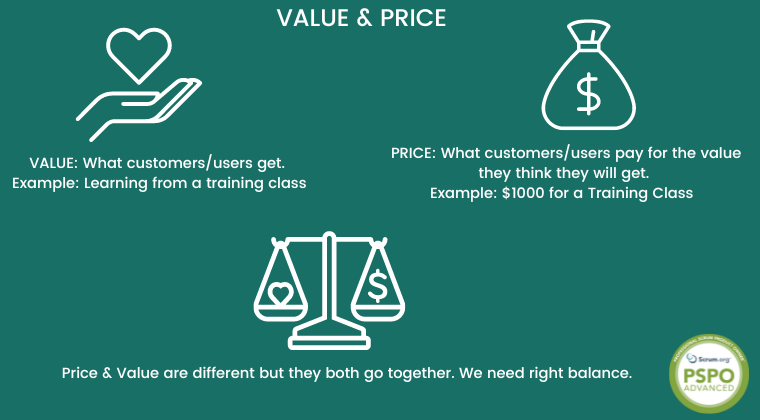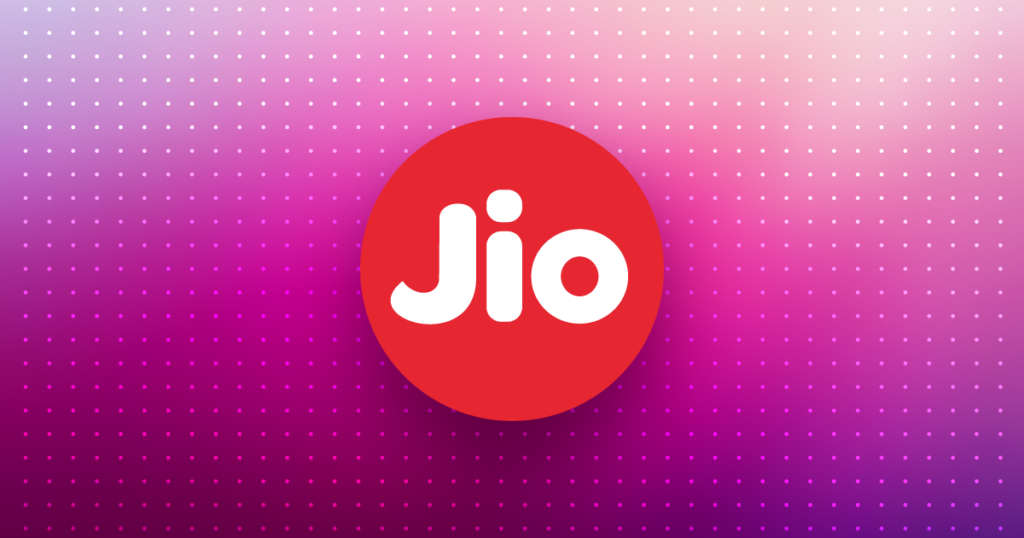Product Pricing can be one of the most important decisions for the success of the product. But still many product people (e.g. product owners/managers) spend very little or no time understanding their products’ pricing decisions.
I understand that many Product Owners/Product Managers are not involved in pricing decisions or not empowered to take pricing decisions but you must know at least how these decisions are made. What was the rationale behind selecting/rejecting a pricing strategy/tactic? You must know who takes these decisions.
As a Product person, it is important to know what pricing strategy and tactics we should use. There is no silver bullet for this and may require an empirical approach.
For the past few years, I have been coaching product owners/managers in creating some great products, mainly in the e-commerce and education-technology industries. I leant that as a Product person, it is essential to know about pricing decisions. Some of these learnings, I also applied in my training, coaching and consulting business. As a business owner, I am also the Product Owner (accountable for maximising value). I have applied the Value-Based Pricing strategy for my cohort-based Agile Leadership training programs and the Competitive-Based Pricing Strategy for Scrum.org 2 Days training programs. For some of the e-learning products, I use Penetration Strategy where I aim to get feedback from real customers and apply the learning back into the evolution of the products. I also use the Psychological Pricing strategy. The most important learning I had so far, there is no silver bullet for a successful pricing strategy and it requires an empirical approach.
Sometimes we get confused between Value and Pricing. Though they are very connected but there is a difference. Value is what customers/users get when they buy/use a product. For example, I am buying a book. the value that I get from the book is the new knowledge and learning. This is important to me as it helps in doing my job well.
Price is what people pay. For example, Books could be priced at £10- £100. As a customer, I am ready to pay a price based on the value (new knowledge & learning) I am getting. If the book is talking about a topic which I know fairly well, I will not pay more than £10. But if the Book is about a new or emerging topic, I am getting more value and I will be ready to pay more.

We will consider Pricing as a Double-Loop-Learning process that has some Inputs (assumptions) that help in selecting some strategies and tactics. We regularly inspect the results of these strategies and tactics and apply the learning back. Not only to adapt strategies/tactics but also to adapt Inputs.
Learning Loop 1: As we learn from market feedback, sometimes adjustments may be required at the strategies or tactics level.
For example, Your current Pricing strategy is Competition-Based Pricing and you have benchmarked your product prices along the line with competitors. You ran an experiment where you increased the price as you believe that your product’s perceived value is higher. You obtained some results which show no decline in sales.
In the above example with this result, the pricing strategy may move from Competitive-Based Pricing to Value-Based- Pricing.
Learning Loop 2: From the above experiment you may have also learnt that your product’s perceived value is higher than what you initially thought. You have validated assumptions and this result will help you in making changes to your inputs.

INPUTS (Assumptions & Data)
Product professionals need to consider multiple inputs to set up a Pricing Strategy. Whether you’re setting your pricing strategy for the first time, or reviewing your current pricing, you need to consider multiple factors. You just can’t rely on one set of data itself.
Below are a few key considerations that Product Leaders need to look:
- Product Vision & Strategy
- Supply & Demand
- Competitors’ Pricing
- Costs
- Historical Data
1. PRODUCT VISION & STRATEGY

Product professionals need to consider multiple inputs to set up a Pricing Strategy. Whether you’re setting your pricing strategy for the first time, or reviewing your current pricing, you need to consider multiple factors. You just can’t rely on one set of data itself.
Below are a few key considerations that Product Leaders need to look:
- Product Vision & Strategy
- Supply & Demand
- Competitors’ Pricing
- Costs
- Historical Data
Product Strategy is an essential part of any Product’s success and it involves careful planning and execution. It helps in setting goals and objectives that will help you move the organization forward and reach the long-term vision.
What is your key value proposition?
Is it unique or generic?
Is it very different from your key competitors?
Who are our key customers? What problems/needs do they have?
Will your target customers pay for it?
Is the market big enough to make it viable?
All these are important questions that should be answered by Product Strategy and Vision. Eventually, the Product Pricing Strategy is the subset of this wider Product Strategy.
There are tools that can help in building the Vision and Strategy which eventually will lead to clear business goals.
Below are my preferences:
Product Vision
- Elevator Pitch
- Product Vision Board by Roman Pichler
- Product Box
For Product Strategy
PRO TIP: Remember your Pricing Strategy is part of the Product Strategy. Not having clarity or absence of Product Strategy can lead to a flawed Pricing Strategy.
2. SUPPLY & DEMAND

Basic Economics: More Supply than Demand will reduce price and More demand than supply will increase the price.
For product persons, it can be a good idea to understand this supply & demand effect by learning about
- Competitors’ product usage
- Markets trends
- Sales trends
- Usage trends
Getting to know these can be very useful but remember that markets sometimes can change very rapidly. You just can’t rely on data collected a long time ago. You should
- Talk to sales/marketing
- Talk to customers, users
- Collect regular industry trends
- Competitors’ Analysis
- Look for Product Analytics
PRO TIP: Today’s data is tomorrow’s history. It is advisable to keep yourself up to date with current and regular feedback on market analytics
3. COST

The cost could be one of the key factors that you will need to take informed decisions. Many Product persons don’t even know the cost of product development.
Many times getting a precise cost can be difficult and time-consuming. Hence, starting with an average team member cost could be a good start.
Generally, I ask about my organisation’s average cost per employee. Most times that data is available. If that data is not available then it is a much bigger problem. However, You can still start with the general industry standard in your geographical location.
For example, the average employee cost is £300. If the team has 6 people then the average cost for that could be 300*6= £1800 per day.
If a Sprint/ iteration duration is 2 weeks (i.e. 10 working days) = the cost of each Sprint/iteration is £18000.
While you consider the cost, don’t just look into cost of delivery but the total cost of ownership ( TCO) including discovery, maintenance/operations as well. Considering discovery, maintenance and operations as a separate entity may cause long-term damage such as bad quality products, technical debt, etc.
PRO TIP: As a Product person you are not only accountable for the cost of delivery but the total cost of ownership of that product or service
4. COMPETITOR PRICING

What is their value proposition? Is it unique to ours?
What is their Pricing strategy?
Yes, I agree that your product may not be the same as your competitors’ but knowing the pricing strategy of your key competitors can be really useful. You need not copy or follow them but if your product is offering very different value to your customers then you would want to price differently. Whereas if there is no huge difference in value offering then pricing could be a competitive advantage as well.
For example, your product’s value offering may be niche as compared to your competitors and you would like to encash that by having a higher price than your competitors or you would like to keep the similar pricing and this may help competitors’ customers turn into your customers.
5. HISTORICL DATA (Win/Loss Analysis)

This kind of information is generally organisations that file for tenders or Requests for Proposals (RFPs).
As a product person, you can work with the sales/marketing team and gather some useful information. Such as
How many Wins/Loss we had previously?
Why did clients/customers choose/rejected our company?
Was it about the prices?
Was it about the value proposition?
Answers to such questions can give valuable insights that can help in setting up the future pricing strategy.
Pricing Strategies & Tactics
There are various kinds of Pricing Strategies and Tactics. Many products sometimes use multiple strategies and tactics.
The key difference between a strategy and tactics is that strategy doesn’t change very often but tactics do change based on industry type, time of the year, small experiments, etc.
Below are only a few examples (there are many more)
1. Value-Based Pricing

In this strategy, prices are set based on the perceived or estimated value customer get from a product.
Most luxury products use this strategy. People are ready to pay high prices based on the additional value they get (e.g. association with a luxury brand. For example Starbucks. Starbucks has a great brand identity and when customer buys coffee from a Starbucks store, they not only get coffee but also a connection with the brand.
2. Cost-Plus Pricing
Probably the most common type of Pricing Strategy. In this producer identifies their costs and then charges the customer a certain mark-up on top of the costs. These margins may vary from industry to industry. For this kind of strategy, organisations need to have very good awareness and control over the costs.
In this strategy, Price = Cost + Mark up
For example, there is a training consultancy delivering training to a large organisation. For this, they freelance trainers who charge a certain amount at Price A. For the trainer, Price A will probably base Value-Based pricing or competitor-based pricing. For training consultancy Price A is cost and they may want to add an X% mark-up. The price training consultancy will charge to the corporate will be 1.X times of Price A.
3. Competitive Based Pricing
Competitive Based Pricing is a very common pricing strategy where the prices of your competitors play a crucial role.
This is generally used a lot when you are delivering a similar product or service to competitors and customers have similar perceived value.
This kind of strategy may also be useful when you are new to a market and have very little data of your own to take pricing decisions.
For example, I started delivering Scrum.org courses in 2020. Initially didn’t know where to start. I used the prices of competitors (other Scrum.org trainers in the United Kingdom) as a baseline. If I set the price higher, probably no one would buy my courses. If I am setting up the lower price then I am not only reducing my profit margin but also lowering the standard industry price which will hurt me as well all the Scrum.org trainers in the long run.
4. Penetration Pricing

In this Pricing Strategy, an organisation first sets the low price. This kind of strategy aims to enter into a new market segment by persuading customers to try a new product or service.
Organisation hope that when they increase prices, they still retain existing customers.
For example: Reliance Jio. Reliance is one the biggest conglomerate in India and wanted to enter into price sensitive but lucrative telecom market. They started Reliance Jio and offered free services for 3 months. It was a great success and today Reliance Jio is the largest telecom operator in India
(source:https://en.wikipedia.org/wiki/List_of_telecom_companies_in_India)
5. Dynamic Pricing
This is a kind of pricing tactic. In this Prices changes in real time.
Most travel product organisations use this tactic along with the value-based pricing strategy.
For example one of the tactics used by Booking.com is dynamic pricing. Their algorithms measure the supply, the demand, the proximity, showing key competitor price next to your product, etc. and set the rate accordingly.
6. Psychological Pricing
Psychological Pricing is a pricing tactic based on the theory that certain prices have got psychological impact. A very common example is setting the price slightly lower than a whole number.
For example £9.99 instead £10.00.
However, it is more than just the whole number.
For example: ‘Almost Sold Out’, ‘ Only a few seats left’, ‘ Only one day left in using your coupon’. All these are an example of Psychological Pricing.
RESULTS ( INSPECT & ADAPT)
Pricing is like a process rather than a set-in-stone. Your pricing strategies & tactics are medium to reach your product/business goals. In the complex environment, there are no guarantees for success and this applies to the pricing of the product as well. Few strategies and tactics will work and few will not. Few that have worked in the past, may fail in the future.
Hence, as a product people not only need to keep experimenting but also check the results of those experiments.
Sometimes you will try to use Penetration Pricing to enter the market but sometimes you need to come out of it and use other different strategies like Competitor-Based Pricing supported by Psychological Pricing.
Sometimes slight decrease in the price can make you look better than your competitors. Sometimes it can backfire.
Pro Tip: In a complex environment, there are no guarantees for success and this applies to the pricing of the product. Few strategies and tactics will work and few will not. Few that have worked in the past, may fail in the future
CONCLUSION
Choosing a price for your products is a key decision. It determines your ability to attract customers and also how profitable the product will be. It does require careful thought with an empirical mindset.
You may not be directly involved in these decisions but awareness can be really helpful. It may help you in understanding the value of the product better.
Pricing is like a double-loop learning process and requires an empirical mindset. Based on the feedback from the market/stakeholders, sometimes you need to adjust strategies/tactics or sometimes your assumptions/data that you have used to create the Pricing Strategy.
We at Scrum.org, consider the Product Owner as accountable to maximise value and want you to reach an Entrepreneur type Product Owner. to reach there you need to know how what value your customers/ users get and understand the pricing as both require a good balance.

Join our Professional Scrum Product Owner class to learn more about this topic.


